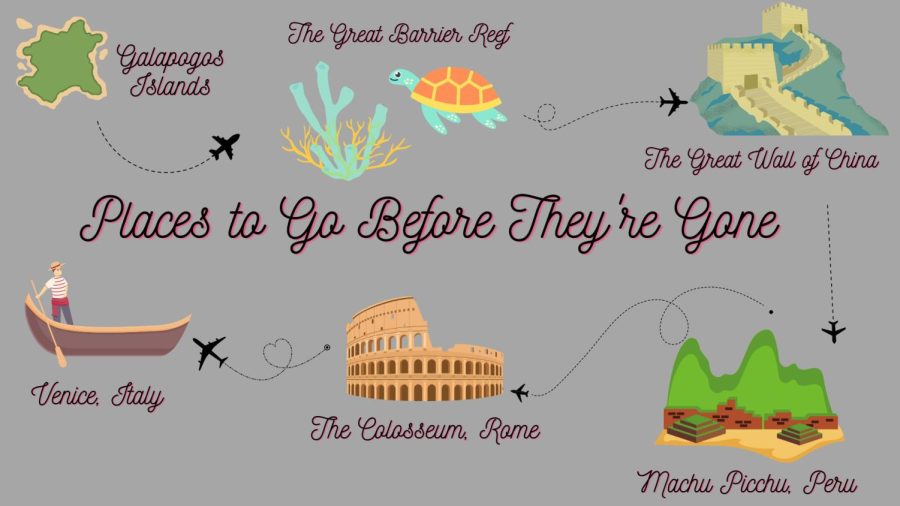Historic Sites That Won’t Be Here For Much Longer
Many opportunities, like traveling in ruins, have been revoked due to disrespectful acts of vandalism from tourists.
Locations in both Syria and Croatia have been damaged and can no longer be appreciated by newer generations.
Recognizing different historical artifacts can deepen our understanding of past generations.
In the Galapagos, natural ecosystems are being destroyed, mostly due to overfishing.
Marine life is famously conserved in the islands, but because of illegal fishing the food chain has altered.
Humans have also introduced a variety of invasive species. Over time, many native species will go completely extinct due to the negative impact caused by these newer species.
Another ecosystem being overfished and polluted is the Great Barrier Reef.
Although both of these factors have negatively impacted the reef, one of the bigger causes of its destruction has been the effects of global warming.
When humans burn and mine fossil fuels, it heats up the ocean. If the ocean stays too warm for too long it causes the coral to bleach therefore it has been slowly killing the beauty and functionality of the reef.
The Great Wall of China is also slowly crumbling. Only about eight percent of the entire wall is being successfully preserved.
Although most of the wall has been destroyed for a long period of time, it is still important for people to be able to see the wall for decades to come.
At Machu Picchu, tourists have been known to disrespect the stone work of the site.
History in general is a beautiful way for us to connect ideas from the past to today.
We can further understand the way people lived day to day and it is an empowering experience to walk in those steps.







